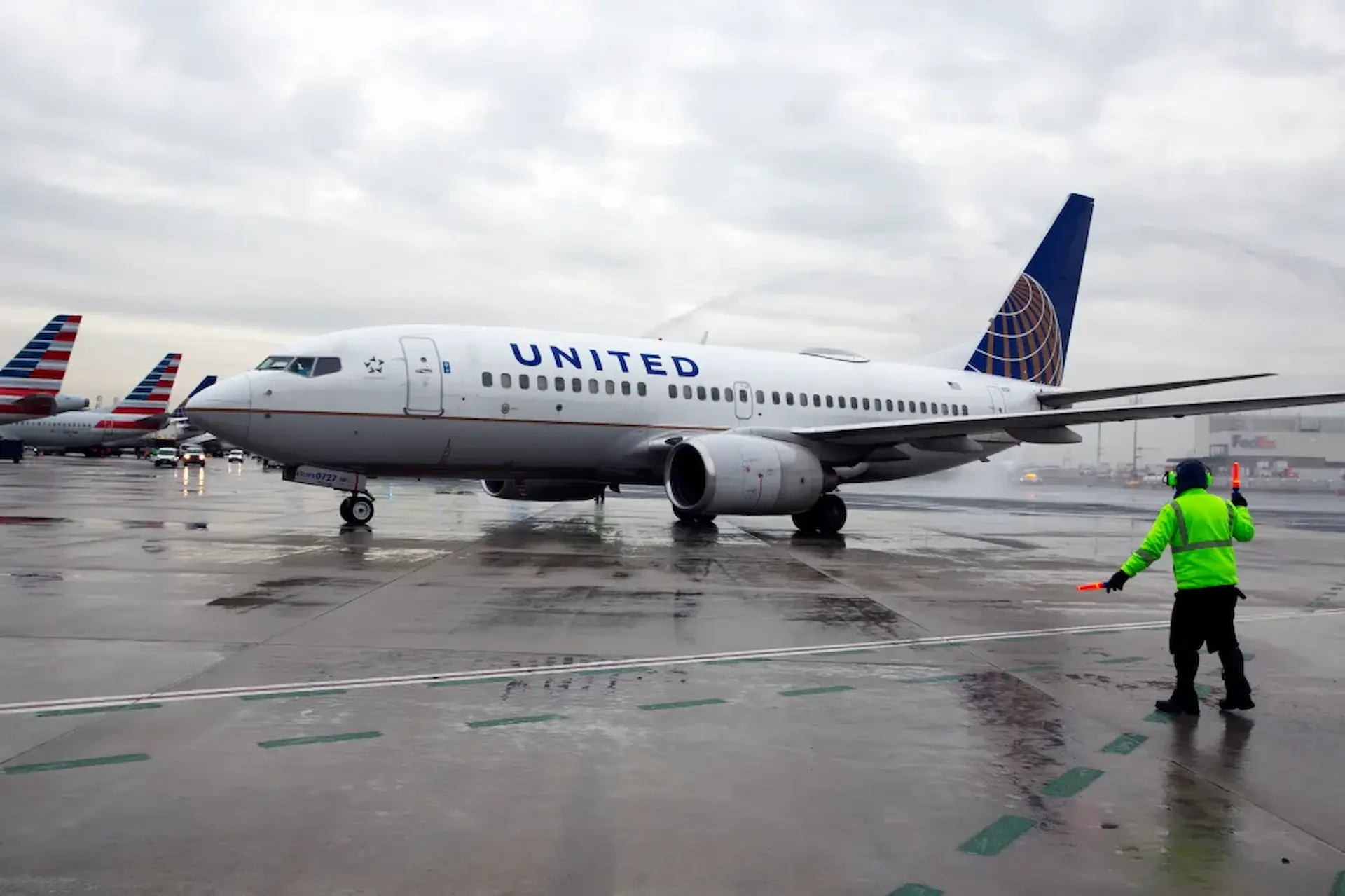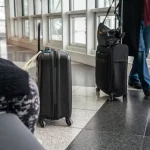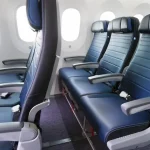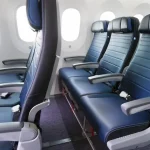A mechanical issue forced a United Airlines Boeing 737 MAX 9 to make an emergency landing at Newark Liberty International Airport, sparking safety concerns and highlighting the importance of emergency preparedness in air travel.
This article explains what caused the incident, how passengers were affected, the airline and airport responses, and what travelers need to know about emergency procedures, their rights, and aviation safety protocols.
Key Takeaways
- A mechanical issue triggered an emergency landing by United Flight UA293 at Newark.
- Passengers remained physically unharmed, though some experienced panic.
- Emergency services at the airport were well-prepared and responded swiftly.
- United Airlines issued a formal statement and initiated an investigation.
- Understanding emergency landing procedures and passenger rights is essential for frequent flyers.
Part 1: What Happened During the United Airlines Emergency Landing at Newark
United Airlines Emergency Landing at Newark: A Timeline of Events
On March 4, 2025, United Airlines Flight UA293 was diverted for an emergency landing at Newark. The flight, a Boeing 737 MAX 9 traveling from Fort Lauderdale, encountered a mechanical malfunction en route.
Key moments in the sequence:
| Time (EST) | Event |
| 1:22 PM | Flight UA293 departs Fort Lauderdale. |
| 3:38 PM | Cockpit crew reports mechanical anomaly. |
| 3:44 PM | ATC clears aircraft for emergency return to Newark. |
| 3:59 PM | Aircraft lands safely. |
| 4:05 PM | Emergency crews assess the situation and secure the aircraft. |
The crew maintained continuous communication with air traffic control. The pilot followed United’s emergency response procedures and declared a mechanical emergency shortly before initiating the descent.
What Triggered the United Airlines Emergency Landing?
A failure in the aircraft’s secondary hydraulic system prompted the emergency response. According to maintenance inspections and EICAS alerts, the left hydraulic module showed pressure anomalies during the flight.
- Hydraulic systems control critical flight components like brakes and flaps.
- The malfunction impaired flap deployment reliability and increased landing risks.
- The pilot opted for a precautionary emergency landing at Newark due to its proximity and infrastructure.
Initial inspections confirmed no structural damage but did reveal a compromised hydraulic valve assembly, which is now under further analysis by United’s engineering team.
Passenger Reactions During the Emergency Landing at Newark
Passenger testimonies revealed a range of emotional responses, from fear to confusion and calmness.
- Some travelers reported hearing unusual mechanical noises.
- Social media updates described passengers holding hands, praying, or anxiously watching the crew.
- Cabin crew provided timely announcements, instructing passengers to remain calm and seated.
“There was a strange vibration. Then the captain explained we’d land earlier than expected. It felt intense but controlled,” said a passenger seated near the wing.
Video clips posted online showed oxygen masks hanging but unused, likely due to a manual error or precautionary deployment.
Newark Airport’s Emergency Response
Newark Liberty’s emergency protocol activated instantly following the pilot’s distress signal.
- Runway 22L was reserved exclusively for UA293’s arrival.
- Two fire engines, paramedics, and hazmat units were deployed.
- Airport management issued a brief confirming that the plane landed without incident and no injuries occurred.
Emergency responders inspected the aircraft for leaks or potential secondary hazards and cleared it for towing shortly after landing.
Official Statement from United Airlines
United Airlines confirmed the incident in a public statement, emphasizing passenger safety and transparency.
“Flight UA293 landed safely after receiving a cockpit alert. We are working with the FAA and Boeing to determine the root cause,” a United spokesperson announced.
Key actions taken:
- Passengers were rebooked or accommodated overnight.
- Affected travelers received 10,000 MileagePlus points and dining vouchers.
- The aircraft was removed from service pending a detailed mechanical review.
Part 2: What Passengers Should Know About Emergency Landings
What Is an Emergency Landing and Why It Happens
An emergency landing occurs when a pilot is forced to land the aircraft earlier than planned due to safety concerns. These events may involve real-time malfunctions, in-flight medical emergencies, or external threats.
Types of landings:
- Emergency landing: triggered by immediate risk (e.g., system failure).
- Precautionary landing: taken as a preventive step without imminent danger.
Common triggers include:
- Hydraulic failures
- Engine shutdowns
- Smoke in cabin
- Sudden decompression
- Passenger medical distress
FAA regulations require post-landing documentation and aircraft inspection for all declared emergencies.
How Pilots Handle Emergencies Like the Newark Incident
Pilots undergo regular simulator training for handling emergencies, including hydraulic failures, engine loss, and forced landings.
In the UA293 case:
- The crew followed EICAS procedures.
- They initiated a direct communication loop with ATC and dispatch.
- Emergency checklists were executed for hydraulic system failure.
- Runway approach was stabilized using manual controls and adjusted flap settings.
Pilots prioritize controlled descent and clear communication with passengers to minimize panic.
What Passengers Should Do During an Emergency Landing
Passenger behavior during emergencies directly impacts safety. Here are the key steps to follow:
- Fasten your seatbelt and remain seated.
- Follow instructions from the cabin crew promptly.
- Assume the brace position when instructed.
- Avoid panicking or obstructing aisles.
- Only use your phone or record if it does not hinder safety.
Cabin crews are trained for both physical evacuation and psychological calming.
Your Passenger Rights After an Emergency Landing
Under FAA and DOT regulations, airline passengers are entitled to specific protections in emergency scenarios.
These include:
- Right to deplane if safety is threatened.
- Right to a full or partial refund if the flight is canceled or rerouted.
- Right to compensation for meals, hotel stays, or missed connections.
Complaints can be filed via the U.S. Department of Transportation Aviation Consumer Protection Division. Travel insurance may also cover disruption costs depending on your policy.
How Safe Are Emergency Landings?
Emergency landings are typically safe and well-managed due to aircraft redundancy systems and crew training.
- 97%+ of emergency landings result in no injuries or fatalities.
- Redundant systems (hydraulic, electrical, pneumatic) reduce the risk of total failure.
- Advanced sensors and software alert pilots before failures escalate.
Modern aircraft are built to land safely even with multiple system failures.
FAQs About the United Airlines Emergency Landing at Newark
What caused the emergency landing?
A hydraulic system failure in the aircraft triggered emergency protocols.
Were there any injuries during the landing?
No injuries were reported. Emergency crews examined passengers as a precaution.
Will this impact future United flights?
United conducted inspections of similar aircraft. No widespread issues have been found.
Should I be worried about flying with United Airlines?
United Airlines maintains a strong safety record. Emergency procedures are standardized and rigorously followed.
What should I do if my flight experiences an emergency?
Follow crew instructions, stay calm, use your seatbelt, and assume a brace position if told to. Avoid filming or panicking.





